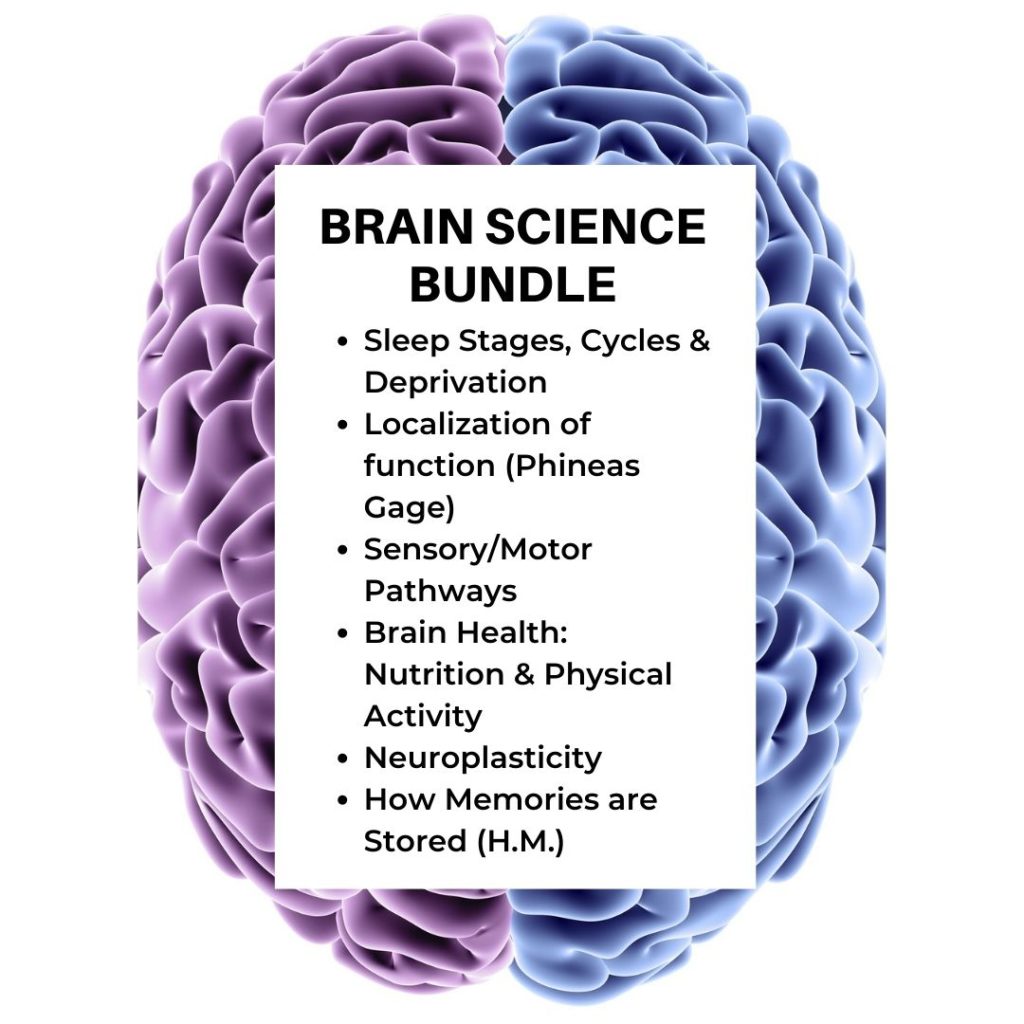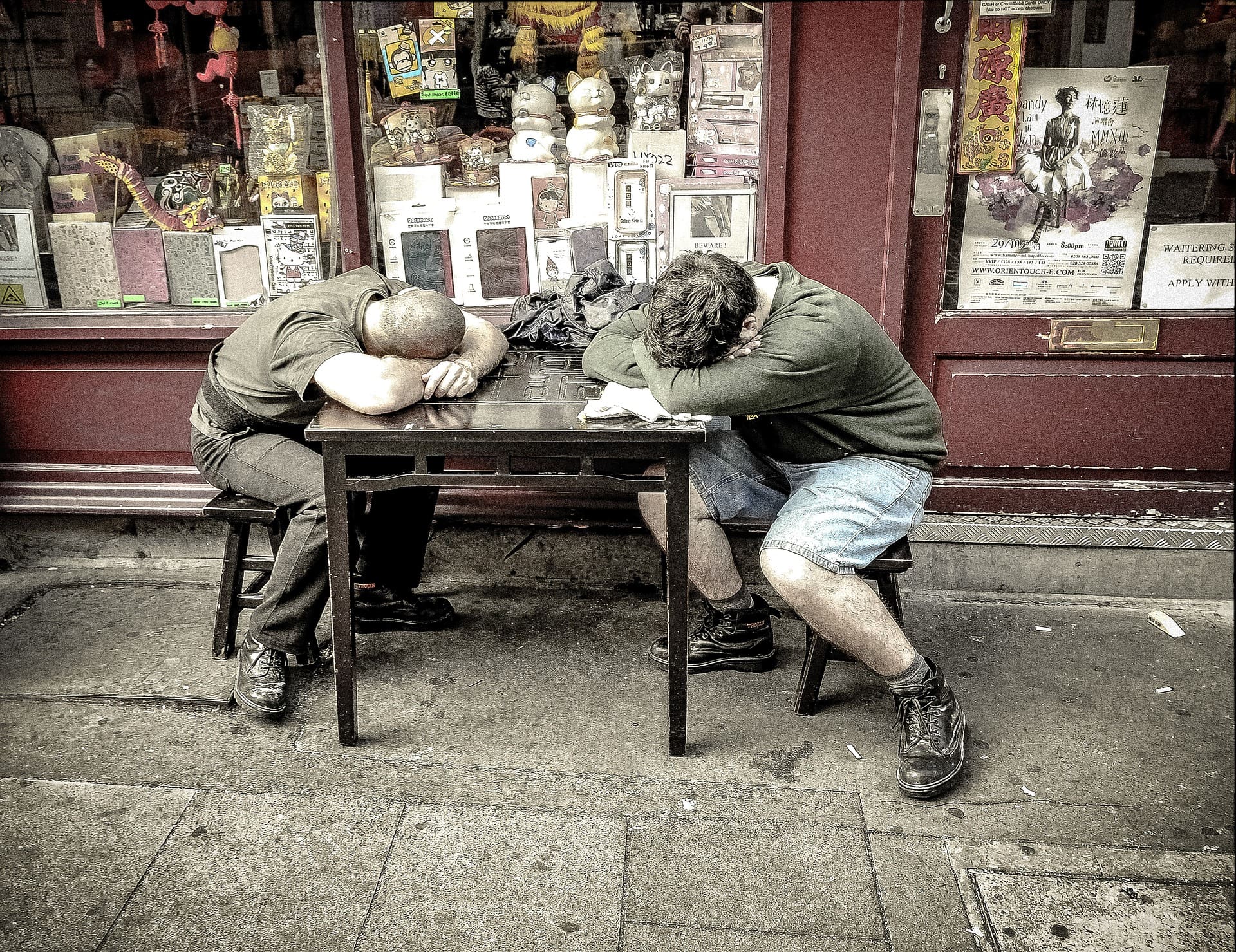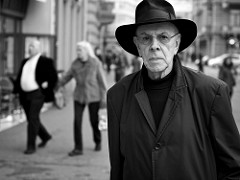A Sleep Deprived DJ
Here’s a really interesting way to learn about sleep stages, sleep cycles, and sleep deprivation:
What’s the longest you’ve ever gone without sleep? A day or two? How did you feel? How was your thinking? Do you remember much of it?
Back in 1959, a New York radio DJ named Peter Tripp stayed awake, in a glass booth in Times Square, where everyone could see him, and went live, on the air, for 200 hours.
Yes, that’s more than eight days straight (and it’s not even the record anymore, that’s 264 hours, or 18.7 days).
Why would anybody do that, you ask? Well, he wanted to raise money for the March of Dimes and get some publicity while he was at it. Why would anyone let him do that? Researchers thought this would be an excellent opportunity to learn what happens to us on no sleep, and with a willing and eager subject, they didn’t pass it up. Throughout the eight days, the researchers and doctors took shifts staying with him making sure he was awake and ok.
What happened to him? First let’s take a quick look at what happens when we sleep, so it will make a little more sense when we see what happened when he didn’t. When we fall asleep, sleep, then wake up, our body and brain go through a pretty predictable pattern.
Sleep Cycles/Stages
A sleep cycle is the window of time our brain goes through all four of the sleep stages. Each stage will take up a certain proportion of the cycle depending on how long you’ve been asleep.
Going through one cycle of the four stages takes about 90 minutes, and the whole pattern repeats several times through the night. From one cycle to the next, the amount of time allotted to each stage will change.
Stage 1:
For starters, our eyes are closed, while breathing and heart rate start to become nice and regular. We can be easily awakened, and we might not even realize at this point we were starting to fall asleep.
Stage 2:
As we approach deeper sleep stages, everything really slows down, so our body can go into growth and repair mode – things it can’t do when we’re alert and active. During this stage our body temperature starts to cool, and our heart rate slows, easing us into the deeper sleep stages.
Stage 3:
Our muscles relax more fully, blood pressure decreases, and the immune system goes to work making necessary repairs. During this period, brainwave activity looks smooth and calm on EEG (electroencephalogram), which leads to the next stage. This is what’s called the “deep sleep” stage.
Stage 4:
Rapid Eye Movement (REM) occurs when the EEG (brainwave activity) starts appearing to go into overdrive. During REM, the brain becomes very active (we dream), and our eyes can be seen moving around under our eyelids (hence the name, REM). REM gradually takes up a greater portion of each 90-minute cycle.
During REM energy is being restored and we are being once again prepared for daytime activity. It’s during this time, paradoxically, that we become almost paralyzed, probably to prevent us from endangering ourselves by physically acting out our dreams (that’s the best guess at this point).
Eventually, our sleep cycles taper off and we become gradually more alert, waking up after five or six cycles (assuming we sleep through the night). If you want to know more details about sleep, go here: https://sleepfoundation.org/how-sleep-works/what-happens-when-you-sleep.
When Your Body Really Wants to Sleep: Sleep Deprivation
So what happened to Peter Tripp when he went so long without sleep? Initially, he seemed ok, staying friendly and upbeat, his usual DJ personality intact. But, keep in mind what the brain does during the sleep stages.
Peter’s body temperature started dropping early in the experiment, and continued to go down through the entire process. Remember the second stage of sleep? Yep, his body really wanted to force the issue by cooling off, to no avail. According to researchers, “the lower it went, the crazier he got”.
After three days of keeping him awake, he inevitably became more and more irritable. He started berating and cursing at long-time friends, and his thinking got quite confused. As you recall, the REM stage seems to be important, since it takes up a longer portion of sleep each night. What goes on during REM? Dreaming. If his body was trying to cool down for sleep, it probably wanted to dream too. Imagine a brain that’s trying to dream but is still awake.
Peter Tripp’s Strange “Trip”
Enter the hallucinations. There were spiders in his shoes, and flames coming out of a drawer , (and much, much more!). Since he was awake, his body wasn’t inhibited from “engaging” in the dream, so he was up and fully involved.
Peter was just not in touch with reality. What do you think he did when a nicely dressed guy in black came in the room? He thought the man was an undertaker from a funeral home comin’ to get him. So of course, he RAN. Right into Times Square, one of the busiest city streets anywhere.
The interesting thing about these hallucinations and crazy behavior? It came and went in about 90 minute cycles. Coincidentally (not), it’s the same length of time as the sleep cycles we go through. That told us quite a bit about sleep and sleep deprivation, didn’t it? Our body and brain need that sleep and will do whatever it takes to try to get it.
Eight Days Later
How did it end? He managed (with lots of help) to stay awake for 201 hours, then they let the poor guy crash. Twenty-four hours later he woke up and was just fine, so he said. The people around him, however, begged to differ. His marriage suffered then failed, he lost his job (related to a financial scandal that happened before the stunt), and he couldn’t seem to keep another radio job, eventually changing careers. Peter Tripp passed away at age 71 in 2000, and a tribute to him was published in the NY Times, describing the stunt, his scandal, and the road he took in the end.
What’s the takeaway? We really, really need to sleep. If we can be changed by one extreme period of sleep deprivation, imaging what chronic sleep deprivation can do!
Do you have trouble getting enough sleep? Check out these sleep hygiene tips to get some much-needed shut-eye.
To learn more about brain science, check out my other articles:
A Brain with a Great Big Hole in it
The Little Man in Your Head (Really!)



